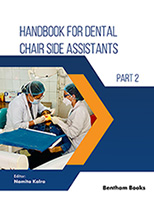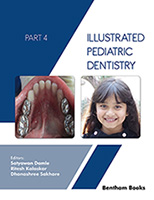Preface
This book is divided into four major sections. The first section provides basic insights into human anatomy including the structure of bone and the functional anatomy of the skull. The next two sections focus on the applications of mathematical and computerized modeling methodology in dentistry as well as in oral and maxillofacial surgery, not only at a research level but also at a clinical level. Mathematical models and experimental studies are two distinct approaches that can be used to further our understanding of the stress and strain environment in mammalian jaw. Despite the fact that accuracy as well as the possibility (to a certain extent) of characterizing the biomechanical behavior of the mandible are offered by experimental studies, mathematical approaches provide unparalleled precision in the representations of magnitudes, gradients, and directions of stresses and strains throughout the entire mandible.
The detailed biomechanical events associated with the functional loading of the human mandible are not yet fully fathomed. In general, the methodologies used to record them are extremely invasive. In this regard, computational modeling and simulation offer a promising and alternative approach with the additional capability to predict regional stresses and strains in inaccessible locations. The ability to extract data from computed tomography (CT) or any other appropriate imaging technology to generate the patient’s own model is already a common practice. For example, by integrating computerized modeling with medical imaging, it would be possible to determine the correct location, configuration, size and number of implants needed to address the patient’s functional and restorative needs. Furthermore, this approach can be used to define the form and mechanical requirements of implants and prostheses employed in the treatment of mandibular and maxillary fractures with fixation and reduction of the fracture obtained with minimal osteosynthesis plate bulk, number and size. This integrated system can be coupled with modern rapid prototyping such as 3D printing and laser sintering to produce superstructures and patient matched dental devices and guides.
In the last section, this book will cover the types of bioceramics and surface modifications currently used in dentistry and oral and maxillofacial surgery as well as their production methods and properties. Bioceramics performed singular and biologically inert roles when utilized as implants prior to the 1970s. The limitations with these synthetic materials as tissue substitutes were highlighted with the growing realization that tissues and cells within the human body performed numerous different vital regulatory and metabolic roles. The demands of bioceramics have changed since then, from maintaining an essentially physical function without eliciting a host response to providing a more positive interaction with the host. This has been accompanied by increasing demands on medical devices that they not only improve the quality of life but also extend its duration. Of even greater importance are the exciting and potential opportunities associated with the use of nanobioceramics as body interactive materials in, helping the body to heal, or promoting the regeneration of tissues, thus restoring physiological functions.
The relationship between biological responses and surface properties of materials is one of the main issues in biomedical materials research. Currently, one of the key drawbacks of synthetic implants is their failure to adapt to the local tissue environment. Improvements in reliability and biocompatibility of implants and prostheses can be achieved through surface modifications. Surface modification of metallic materials using biomaterial thin films and nanocoatings is intended to stimulate bioactivity, biocompatibility and reliability, while at the same time reducing or eliminating corrosion and metal ion release. Important factors in determining the capability and performance of coated implants under physiological environments are their mechanical and adhesion properties. More importantly, computational modeling approaches are vital in the progress of understanding the interfacial behavior between a coating (or thin film) and the substrate material used. The knowledge gained will result in better design and selection of coating and substrate materials.
Andy H. Choi
Faculty of Science
University of Technology Sydney
Australia
ACKNOWLEDGEMENTS
We would like to acknowledge the hard work and efforts of the editorial team at Bentham Science Publishers and in particular Ms. Hira Aftab.
CONFLICT OF INTEREST
The authors declared no conflict of interest regarding the contents of each of the chapters of this book.





